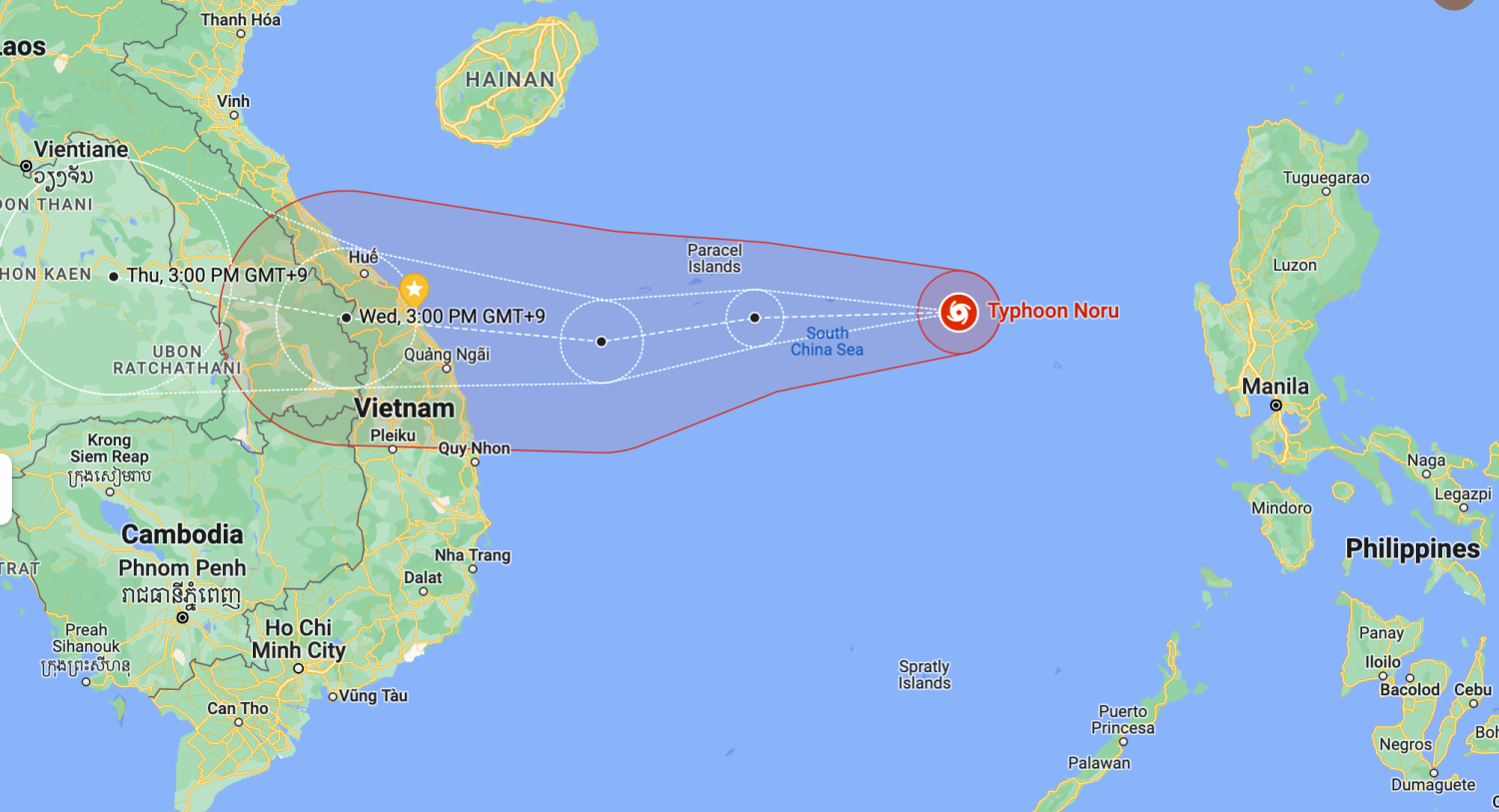Vietnam’s central region is now bracing for the impact of Storm Noru, one of the strongest storms to hit the country in 20 years. The storm, packing maximum sustained winds of 118-149 kph, entered the East Sea early Monday morning and is heading for Danang and neighboring provinces after leaving five people dead and thousands homeless in the Philippines.
Prime Minister Pham Minh Chinh ordered local governments and disaster management agencies on Monday to closely watch the storm's development as it moves closer to Vietnam. The national government said evacuation plans are being set for more than 860,000 residents from Quang Binh to Binh Thuan.
Storm Noru is predicted to be 410 kilometers away from the region at 10 pm Monday and will move at a speed of 20-25 kph Tuesday morning, according to the National Center for Hydro-Meteorological Forecasting.
By 4 am on Tuesday, the eye of the storm will be about 250 km from the Hoàng Sa Archipelago with level 13 (134-149 kph) winds and level 16 gusts. It will continue to move west, from Da Nang southward to Binh Dinh province, at 4 am on Wednesday, where it’s set to make landfall.

Vietnam Meteorological and Hydrological Administration General Director Tran Hong Thai said that Da Nang, Quang Nam, Quang Ngai, and Binh Dinh provinces are likely to be hardest hit by the storm, with natural disaster risk at Level 4.
“Ministries, branches, and localities, especially the heads of such units, must further enhance their responsibilities to ensure the safety, life, and property of the people and the State in the context of the weather,” the prime minister told local media on Monday.
The Ministry of Health has sent a dispatch to coastal cities and provinces from Quang Ninh to Binh Thuan, asking them to stand ready to provide healthcare services to victims of torrential rains and flooding and prevent the interruption of medical treatment services, reported Vietnam Plus. The health ministry also called for measures to control the spread of COVID-19 and dengue fever in affected areas.
Reservoirs and dams have also been secured to prevent overflow and flooding in low-lying areas.
Read: Vietnam Third-Most Exposed Country To Flooding
As a precautionary measure, central provinces have canceled in-person classes from Monday afternoon, affecting over one million students. Schools have also been ordered to reinforce their facilities and be ready in case they’d be used as evacuation sites.
“Climate change is becoming increasingly extreme and unusual, causing dire consequences,” the prime minister said.
Vietnam, one of the most vulnerable countries to climate change, experiences an average of four to six typhoons annually. Due to global warming, the country has seen increasingly damaging typhoons in recent years. Xangsane, the most destructive storm in Vietnam in the last two decades, battered Danang in 2006. It left 76 people dead and over 270,000 houses and 1,280 hectares of agricultural land damaged.
Foreign embassies in Vietnam have also been actively sending out advisories for their citizens, especially those living in affected areas.

British and Filipino nationals have been told by their respective embassies to “follow the advice of the local authorities and monitor local news reports for the latest developments” of the storm. Considering how past storms have battered the central region, embassies strongly advise immediate evacuation or seeking safe shelters in case of floods or structural damages.
Storm Noru is the fourth storm — and so far the strongest — to enter the East Sea this year. About three to five storms are predicted to hit the region over the last quarter of the year, and half of them are forecasted to affect Vietnam directly.
